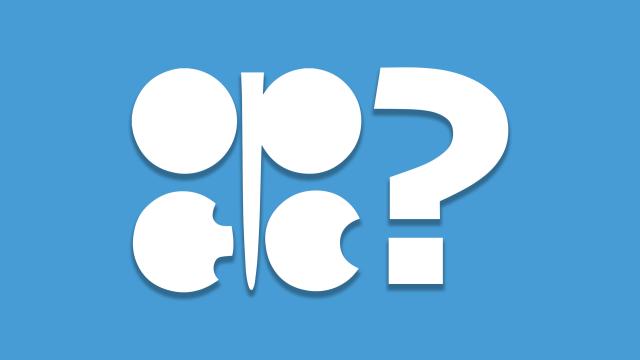
(Source: Shutterstock, Hart Energy)
A little over a month ago the majority of OPEC members must have thought they could see some light at the end of the tunnel.
Oil prices were back to near $75 a barrel, having risen 45% since the beginning of the year. U.S. sanctions on some of their oil-producing cohorts, including Iran and Venezuela, promised to keep prices propped up. And Russia, the group’s main rival-turned-ally, was struggling with contamination of a big pipeline to Europe, providing OPEC countries with an additional market, in the short term at least, for their oil.
But fast forward to today and it turns out the light was not one of salvation for the oil producers’ cartel, but the headlamps of two juggernauts: the U.S. shale industry and a demand-sapping slowdown in the global economy.
Prices have dropped almost 20%, back to near $60 a barrel, and OPEC is once again frozen in indecision, staring rabbit-like at the oncoming threat.
Within the next couple of weeks the cartel is supposed to meet in Vienna alongside Russia and other countries that make up the expanded “OPEC+” group. But the ministers have yet to finalize the date of that get-together.
If they ever manage to settle on timings, they will need to confront an unpalatable reality.
Crude’s failure to sustain its start-of-year rally, despite myriad supply disruptions and threats that once would have had prices nudging $100 a barrel, has provided plenty of fodder for oil bears to argue that the market really has changed in the past half decade.
Almost five years ago to the day, ISIS’s takeover of Mosul in northern Iraq sent oil spiraling upward toward $115 a barrel. But for oil bulls it turned out to be the last big rally of the $100-oil-era. The rise of the U.S. shale industry soon overwhelmed demand, ushering in a new era where supply threats no longer have the same power to shock the market.
Oil bears are now asking some simple questions: if the near-collapse in Iranian and Venezuelan exports cannot keep prices near $70—a level where OPEC members’ budgets generally start to look a little more comfortable—then what can?
And with OPEC already restricting output, is there really much more members can do?
Many hedge funds seem to have already settled on the answers, with financial bets on rising oil prices slashed in the past few weeks.
Part of the reason for this renewed outbreak of bearishness is undoubtedly signs of a slowdown in the global economy, which is starting to hit predictions for oil consumption. Demand is now seen expanding by a little over 1 million barrels a day (bbl/d) globally this year, or roughly 1%, compared with 1.5% annual growth on average in the past five years.
If the U.S.-China trade war really does trigger a deeper recession, forecasts for oil demand are likely to get much worse from OPEC’S point of view.
But shale remains the No. 1 reason that OPEC is paralyzed. Widespread predictions at the start of the year that U.S. supply would slow significantly in 2019, following a sharp drop in prices in the fourth quarter, have seen the industry once again confound its doubters.
The U.S. Energy Information Administration (which has been consistently conservative in its projections of U.S. output growth) sees U.S. crude supply growing 1.4 million bbl/d this year, which would be the second-highest rate of expansion on record, lagging behind only last year’s 1.8 million bbl/d jump. The EIA expects almost another 1 million bbl/d added next year.
That means there are few good options for OPEC at this point.
The cartel has become trapped in a cycle of cutting output to stop prices collapsing, but is now finding it increasingly difficult to even prop up the market, let alone provide it with a lift that might fill members’ coffers.
The drastic option would be to raise production as fast as possible to try to drown out shale, but when members attempted this in 2014 it proved too painful to bear.
Making deeper supply cuts is one option, but is unlikely to be agreed formally, even if Saudi Arabia may quietly continue producing well below its output target.
Fears of provoking the ire of U.S. President Donald Trump are still rife, especially in Riyadh, which needs to retain influence over Washington’s approach to Iran.
An eventual detente between the U.S. and Iran has long been Saudi Arabia’s greatest geostrategic fear. The added threat now is that if Iranian barrels were to return to an already weak market, it would probably collapse the price.
Riyadh must hope this thought has not occurred to Trump, ahead of his re-election bid.
The most likely outcome when OPEC eventually meets, therefore, is to do very little.
Members will agree to maintain their relatively modest output cuts—before factoring in the large amount of supplies lost to sanctions—and hope a recession does not materialize. When the options are all bad, inaction can be the best strategy.
But if OPEC is a rabbit in the headlights, expect oil traders to back the juggernauts.
Recommended Reading
BP Restructures, Reduces Executive Team to 10
2024-04-18 - BP said the organizational changes will reduce duplication and reporting line complexity.
Matador Resources Announces Quarterly Cash Dividend
2024-04-18 - Matador Resources’ dividend is payable on June 7 to shareholders of record by May 17.
EQT Declares Quarterly Dividend
2024-04-18 - EQT Corp.’s dividend is payable June 1 to shareholders of record by May 8.
Daniel Berenbaum Joins Bloom Energy as CFO
2024-04-17 - Berenbaum succeeds CFO Greg Cameron, who is staying with Bloom until mid-May to facilitate the transition.
Equinor Releases Overview of Share Buyback Program
2024-04-17 - Equinor said the maximum shares to be repurchased is 16.8 million, of which up to 7.4 million shares can be acquired until May 15 and up to 9.4 million shares until Jan. 15, 2025 — the program’s end date.





